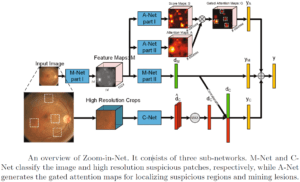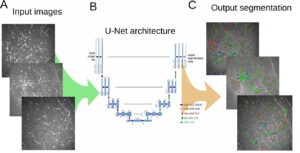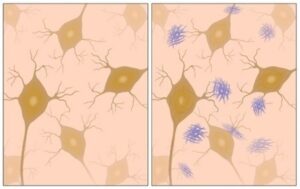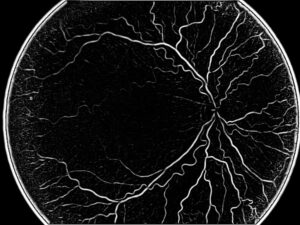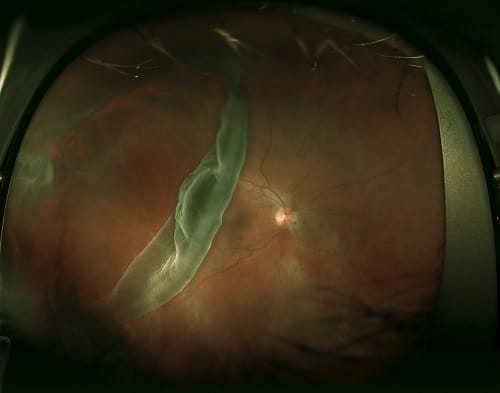
There are 2 types of detachment: either it is caused by fluids, which might be of lacrimal origins, gathering underneath the retina and lifting it; or it happens when the retina is pulled away together with the vitreous gel of the eye itself. The main reasons for the first might be retinal thinning, AMD or other pathologies, while the main reasons for the second might be excessive adhesion of retinal layers to contracting gel inside the aging eye, leads to a retinal tear from the RPE layer.
Retinal detachment is a medical emergency situation and needs to be treated immediately, generally by surgery, which fixes the retinal tears using photocoagulation (a laser treatment) or other kinds of procedures.
Detection of retinal detachment
Retinal detachment caused by fluids concentrating between the RPE and the inner layers of the retina. In some cases, fluids do not appear so clear in the OCT images and actually look grey, but still darker than the retinal layers. During the layers segmentation, the algorithm tracking the layers from left to right uses some optimization method.
Whenever we have a high curvature in the layer detection or a dark area above the lower layer, we must try to segment the cyst and by that we can give an estimation of the volume of the liquid found under the tear. In many cases where a cyst is found, the regular RPE to ILM measurement might give questionable results. But since we concentrate here in finding this edema, we are equipped with much better models for the pathology and can do a much better segmentation. The techniques that we will choose are a combination of various graph algorithms: either Bellman-Ford or Dijkstra will enable us to isolate the layers. Another segmentation algorithm, based on basic analysis, will tell us whether we have found a cyst or not. After that, we will be at ease to make the final retinal detachment segmentation using graph cuts, region growing or Otsu, an image processing binarization algorithm named after Nobuyuki Otsu, a Japanese mathematician.

 Ophthalmology
Ophthalmology
